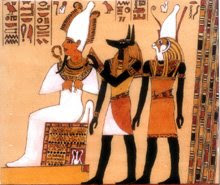
The statements of the Lord to Nephi in the Book of Mormon present today’s Latter-day Saints with a significant conundrum. Let’s take a close look to see what it’s all about.
We begin by quoting the germane passages from 2nd Nephi, chapter 29, in an order that clarifies and lends weight to the Lord’s vital message:
“Know ye not that . . . I bring forth my word unto the children of men, yea, even upon all the nations of the earth?” (2 Nephi 29:7) Well, that’s good news. And it seems only fair that all the “nations of the earth” should have the word of God. That’s the assignment of the church. That’s why we do missionary work. We go door-to-door with our revealed scriptures and our sacred message of restoration.
“Wherefore . . . neither need ye suppose that I have not caused more to be written.” (2 Nephi 29:10) What? More writings than what came out of the Restoration? Curious. Isn’t what we have enough? Is God telling us that there is much more out there than what we have in our present canon?
“For I command all men . . . that they shall write the words which I speak unto them; . . . (2 Nephi 29:11) Okay. That puts a bit of a different spin on the previous verses. This verse seems to imply that God has revealed his “words” to people everywhere, down through time. Again, that seems only right and fair. So far, so good.

“. . . and I shall also speak unto all nations of the earth and they shall write it.” (2 Nephi 29:12) Repetition . . . just so we don’t misunderstand. Got it. There are writings from “all nations of the earth,” which were given to them by God. So, maybe this isn’t just about missionary work. Maybe it’s about revelation to all nations or cultures down through time.
Of course, we have the Bible, the Book of Mormon, the Doctrine and Covenants and the Pearl of Great Price. But these verses seem to indicate that there is much more out there, given to “all nations of the earth” that qualifies as the word of God.
With the clarity of the previous verses, we could hardly suppose that the few scriptures or “words” that we have is all there is. But if that conclusion is correct, where are these other writings? When we look around for these so called “writings” or texts, we see nothing like the messages we find in our scripture. Therein lies our enigma.
“Wherefore, I speak the same words unto one nation like unto another.” (2 Nephi 29:8) That seems significant. It implies that the message to every nation has been the same. But if that’s the case, why don’t we see a lot of other scripture out there like that which we now have?

This seems to be a contradiction. God told Nephi that there are “writings” the world over that have the same story to tell as our “writings” or scripture. However, when we look around, we see nothing else like our scriptures, seemingly.
“. . . I will judge the world, every man according to their works, according to that which is written.” (2 Nephi 29:11) Just to add weight and immediacy to his proclamation to Nephi, the Lord tells us that we will be judged by all that has been written. Since that includes us, we might want to locate these other “writings” in order to study and appreciate their message.
If we are to believe what the Lord says to Nephi, there is much more out there than our present canon that qualifies as scripture
. Clearly, we must be missing a lot. Given the many nations or cultures in the world, the promised words should amount to a sizable body of text.
So, where are promised words from “all nations of the earth?” Where is this considerable body of text? Is it truly missing, or are we just unwilling to recognize them as writings inspired by God, as scripture?

The truth is, they’re all around us. They are the sacred records of ancient civilizations, unearthed by archeologists and salvaged by scholars from obscurity. They are a voluminous corpus of writing that all tell the same story. They are classified as creation stories, flood stories, ascension literature, dreams, visions, mythology and tradition. There are texts that relate ancient temple rituals, sacred dramas, the exploits of gods, goddesses, beasts and dragons. They all tell the same story, but each is told from the perspective of its own culture, just as God told Nephi: “Wherefore, I speak the same words unto one nation like unto another.” (Ibid.)
And here’s where I lose most Latter-day Saints, sadly. But here’s the truth. The story is one of the heavens–cosmology. Try reading some of these ancient texts if you don’t believe me. Read the Egyptian Coffin Texts or the Pyramid Texts. It’s very much like reading the Book of Abraham from the Pearl of Great Price.
The Joseph Smith papyri are an excellent example. That’s why he included them in our canon. As Nibley repeatedly and emphatically pointed out, their message is cosmological. We just can’t make any sense of them because we don’t understand the role of cosmology in ancient cultures and in the gospel of Jesus Christ. These ancient texts are written with an eye to cosmology . . . the story of the ancient heavens. And because most Mormons don’t recognize cosmology as a valid part of the Gospel of Jesus Christ, they ignore it.

But the papyri carry the same story as that told in modern revelation of the very ancient books of Enoch, Abraham and Moses. It’s “a pearl of great price,” as Joseph valued it and so named it. And it’s all about cosmology – stars, planets, etc.
But that fabulous book is our least read and understood. While we marvel at the scope and magnificence of the cosmic vision given those ancient prophets, we puzzle over their message for us and the meaning of the papyri explanations Joseph included. We wonder at the strange words—Kolob, Hakokaubeam, Oliblish, etc.—but we miss the underlying, cosmic message.
And here’s another revelation: It’s the same story written in our temple symbolism and endowment rituals. But we don’t understand them either, for the very same reason.
As it turns out, cosmology is the common denominator of all ancient belief systems, restored by our prophets in these latter days. That’s why God told Nephi, “Wherefore, I speak the same words unto one nation like unto another.” (2 Nephi 29:8) But we fail to see what is “plain and precious,” right before our eyes because our gospel training has not included cosmology.
That’s why whole books of our existing scripture, including some revealed through Joseph Smith, are still “sealed books” for us. We have neglected the concept of cosmology in our gospel study. As a result, Latter-day Saints have many scriptural “blind spots” that prevent them from understanding the very gospel they embrace.
(For more information, try reading “Why Cosmology?”)
Why Cosmology?

I get this question all the time.
“Why study all this cosmology and symbolism stuff when today’s prophets and apostles emphasize gospel principles? Isn’t that an indication of where we should spend our time and efforts?”
I respond:
Yes. The brethren focus on the basics for the benefit of potential converts and the newest church members because their mission is worldwide conversion and the building of the kingdom. That’s why their message is repetitive. They consistently emphasize the basics. And there is great wisdom and virtue for each of us in revisiting those basics on a regular basis. That’s why we consistently hear that same, vital counsel.
But once firmly grounded in the faith, the responsibility to move forward is wholly ours. The brethren are not there to do what we can do for ourselves. We are responsible for our own salvation. This has always been true.
Inquirers then ask, “Then, why bother with traditional, cosmological imagery? How is this useful? Isn’t this information really irrelevant to our salvation, just a curious sideline?”
Here’s my response:


